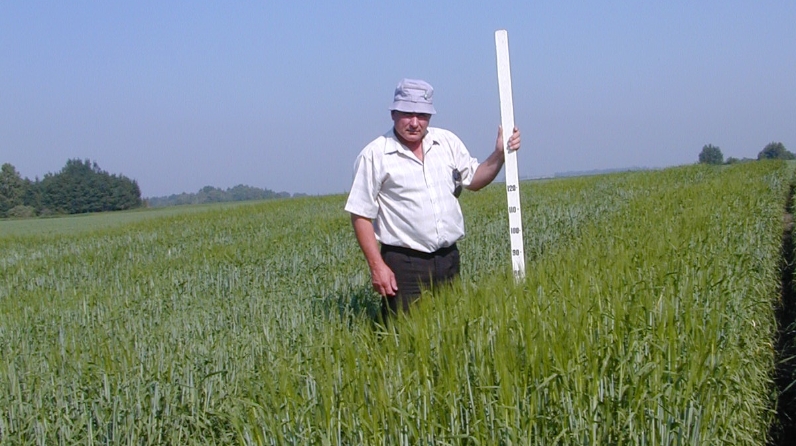A new Kamashevsky variety of barley has shown high yield and economic efficiency

In recent years, a shortage of moisture has been observed in the republic almost every year, which is accompanied by a long dry period, high daytime temperatures, a decrease in relative humidity and a low content of productive moisture in a meter layer of soil during critical periods of plant development. For barley, this is May and June, when plants form reproductive organs and intensively increase the vegetative mass. To form 1 kg of barley grain, plants require up to 12 mm of moisture.
According to the Ministry of Agriculture of the Republic of Tatarstan, varieties with a short growing season, which use spring-winter moisture more efficiently, are more demanded now. And there are only three such varieties in regions of Tatarstan: Volga 22, Orlan - Samara morphobiotypes and our local variety Kamashevsky.
A variety that meets these requirements was created by the barley breeding staff of the TatNIIKh FITs KazSC RAS - this is Kamashevsky variety. It is included in the State Register of Breeding Achievements approved for use in the Republic of Tatarstan in 2017.
The variety is very popular among manufacturers. In 2019, the cultivation area of the new varieties of barley Kamashevsky amounted to 22.2 thousand hectares. At the same time, it formed an average productivity of 40.3 c / ha, which is 7.5 c / ha higher than the national average. Economic efficiency is more than 75.5 million rubles.
Two-row variety of barley Endan and multi-row Tevkech are also successfully passing the State variety test of the Russian Federation. The production testing of these varieties confirmed their high productivity: at Khleborob LLC in the Ulyanovsk Region of the Ulyanovsk Region, the yield of Endan grain was 67.1 and Tevkech 57.5 t / ha. In Yalalov I.F. The Republic of Bashkortostan of the Ilishevsky district of Endan it formed a yield of 42.9, and Tevkech - 46.0 c / ha (standard - 37.9 c / ha). In 2020, the state variety testing of a new variety of barley Laishevsky will begin.
For reference: Features of the Kamashevsky barley variety
Variety Kamashevsky ripens earlier than Raushan by 5-7 days, the growing season is 69-72 days. The earing phase begins on June 10-15 (Raushan on June 21-25), this creates the prerequisites for its full use in feed mixtures with peas and oats. The variety effectively applies the spring moisture, quickly restores the stalk with sparse crops, it can be sown with lower seeding rates. According to our research, in favorable years, sowing rate of 3.5 million germinating seeds per hectare exceeds the productivity of the Raushan variety by 4.4 c / ha with a sowing rate of 5.5 million.
Kamashevsky forms a high yield due to larger grain, the main share (62.8%) of the crop is formed on a sieve of 2.8 mm, variety Raushan - 45-53%.
Variety of steppe morphobiotype is medium resistant to fungal diseases, resistant to smut. High rates of nitrogen fertilizer application and an overestimated rate of sowing seeds (6.0 and more million / ha), as well as adverse weather conditions cause lodging of plants. The protein content in the grain reaches 14%.
Barley is a crop of the earliest sowing. Sowing is necessary when the physical ripeness of the soil is achieved. In the spring, using traditional cultivation technology, you can sow immediately after harrowing. Our studies show that each day of being late with sowing dates leads to significant crop losses. Variety Kamashevsky supposes the earliest period of sowing, every day of delay leads to a loss of yield of 1 centner per hectare, Raushan - 0.5 centner / ha.
If you are late with sowing for 10 days, the losses will make 10 kg / ha, and for Raushan variety - 5 kg / ha.
We wish you to carry out the spring field work on time.